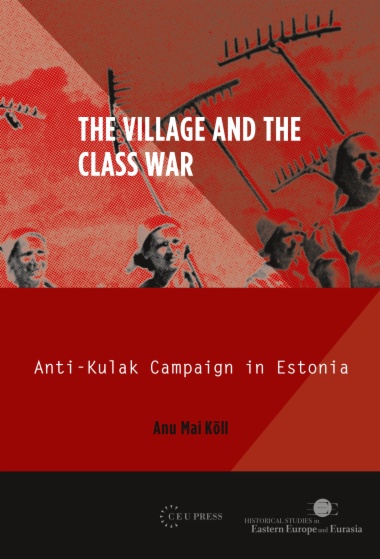Before collectivization of agriculture in Estonia, “kulaks” (better-off farmers) were persecuted and many of them were finally deported in March 1949. This book is situated on the local level; the aim is to understand what these processes meant from the perspective of the Estonian rural population, a kind of study that has been missing so far. Analyzes the mechanisms of repression, applying new aspects. Repression was mainly conducted through a bureaucratic process where individual denunciations were not even necessary. The main tool of persecution was a screening of the rural population with the help of records, censuses and local knowledge, in order to identify, or invent, “kulak families”. Moreover, in the Estonian sources, the World War II history of each individual was a crucial part of screenings. The prisoners of war of the Red Army, held in camps in Estonia, played an unexpected part in this campaign. Another result is a so far neglected wave of peaceful resistance as the kulak identifications were challenged in 1947-48. This has not been addressed in the existing literature. The results mainly answer the question “how” this process worked, whereas the question ”why” finds hypothetical responses in the life trajectories of actors.
- Cover
- Series title page
- Title page
- Copyright page
- Table of Contents
- List of Tables and Graphs
- List of Photographs
- Preface
- 1. The Land Question in Estonia
- 1.1. A griculture and the First Soviet Year 1940–41
- 1.2. Nazi Occupation 1941–1944
- 1.3. Reconstruction of Soviet Estonia
- 1.4. Estonians Living in the Soviet Union
- 1.5. Land Reform 1944–45
- 1.6. The Anti-kulak Campaign 1947–49
- 1.7. Deportation
- 1.8. The Aim of the Book
- 1.9. The Local Study
- 1.10. Organization of the Book
- 2. Soviet Repression as a Special Case of State Violence
- 2.1. Research into Violence in the Soviet System
- 2.2. Kulaks and Collectivisation in 1929–32
- 2.3. The Estonian Anti-kulak Campaign
- 2.4. Comparing Anti-kulak Campaigns in 1929–32 and 1947–49
- 2.5. A spects Pursued in this Local Study
- 2.6. The Soviet Estonian Archives
- 3. The Anti-kulak Campaign
- 3.1. Seizing Power
- 3.2. Local Authorities
- 3.3. The Land Reform
- 3.4. Persecution of the Kulaks Begins
- 3.5. Was there Freedom of Action?
- 3.6. Appeals against kulak status
- 3.7. The Kulak Taxes
- 3.8. The Exclusion of Kulaks
- 3.9. From Campaign to Deportation
- 3.10. Liquidation of the Kulaks
- 3.11. The Extent of Local Participation
- 4. Inventing Kulaks
- 4.1. The Process
- 4.2. The Voices of Kulaks
- 4.3. The Appeals
- 4.4. Retroactive Soviet Law
- 4.5. Negotiations Concerning Exploitation
- 4.6. Negotiations Concerning Prisoners of War
- 4.7. The Political Criteria
- 4.8. Kulak Strategies
- 4.9. Negotiation as Participation
- 4.10. The Result of Negotiations: Kulak Declarations
- 4.11. Conclusions
- 5. Participation at the Local Level
- 5.1. The Local Nomenklatura
- 5.2. The Cadre Policy
- 5.3. The Reluctant Henchman
- 5.4. The Ambitious Bureaucrat
- 5.5. The Tender Wolf
- 5.6. Persecute or Perish
- 5.7. Persecution as a Social Process
- 5.8. Communist Party and Councils in Viljandi County
- 5.9. The Security Forces
- 5.10. Why did Local People Participate?
- 6. Epilogue of March 1949
- 6.1. Rapid Collectivisation
- 6.2. Division of the Spoils
- 6.3. Stepping Out of Line
- 6.4. Not on the Deportation List
- 6.5. A Normal Stalinist Purge
- 6.6. The Purge of ECP in 1950
- 6.7. Lessons of the Campaign
- 7. The Grammar of Terror
- 7.1. Responsibility and Participation
- 7.2. Participation and Discourse
- 7.3. Participation in a Bureaucratic Procedure
- 7.4. Participants—How did They Get There?
- 7.5. Openness and Legitimacy
- 7.6. The Importance of War
- 7.7. A Grammar of Terror?
- Appendixes
- Appendix I
- Kulak Families in the 1939 Agrarian Census
- Using the Data Ten Years After
- The Size of Kulak Farms
- Herd Size
- Wage Work
- Appendix II
- Family Structures
- A Statistical Control Group
- Bibliography
- Index

